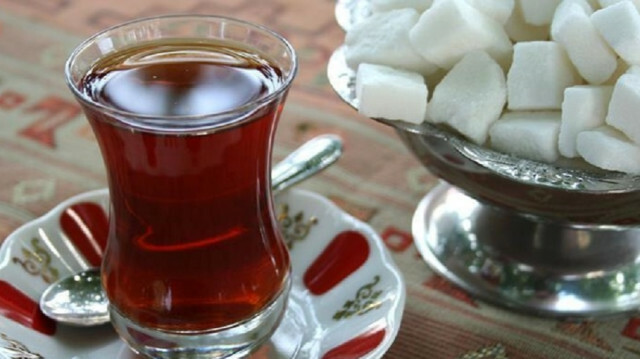
Tea comes from environments that meet specific requirements, making it one of best known in Africa
Uganda is endowed with a favorable climate, fertile soils, altitude, plenty of sunshine and abundant rainfall for tea growing.
Tea is largely grown along the Lake Victoria crescent, the lower slopes of the Rwenzori Mountain -- 1,200-1,800 meters (3,937 feet-5,906 feet) above sea level -- and the Western Rift Valley.
The tea plant, introduced in 1900, had by the mid-1950s become one of Uganda’s main estate crops. An average of 65,000 metric tons (71,650 tons) is exported from the country annually and experts think that this figure could be further improved with better agronomical practices.
Uganda has only exploited about 10% of its potential for tea growing and has about 21,000 hectares (52,000 acres) under cultivation for the crop.
Tea leaves are harvested by hand or shears, with well-trained workers able to selectively pick the plant's two main leaves and bud, which are then usually processed. Though the tea liquors are of average quality, their leaves are very clean, blackish, grainy, and dense.
- Ugandan tea meets specific requirements
Consumption of tea can have benefits to health and wellness due to the beverage’s anti-inflammatory and antioxidant effects. It also has a cultural significance for many societies.
The majority of Uganda's tea finds its way to international markets, including to Turkey, the world's top tea consumer per capita.
Turkey is a strategic market for African tea producers like Uganda, with a production capacity averaging 65,000 tons per annum and potential for further growth and productivity gains.
All Ugandan tea comes from farming environments that meet specific requirements, including little or no use of pesticides, making it one of the best-known agricultural export plants on the continent. The country ranked third last year among African producers behind Kenya and Malawi, according to the Hamburg-based data website Statista.
The most typical method of tea processing in Uganda is curing in the sun. Also used often is charcoal-based roasting, a method that many claim gives the leaves an aromatic flavor and prolongs shelf life.
- Turkey-Africa relations
Trade volume between Turkey and Africa has risen by 381%, ballooning from $5.4 billion when Turkish President Recep Tayyip Erdogan came to power in 2003, to $25.4 billion in 2020.
“We will work together, shoulder to shoulder to increase our trade volume up to $50 billion,” Erdogan said in January last year at an economic and business forum between Turkey and Africa.
Erdogan has visited 30 of 54 African countries, the most by a non-African head of state. The number of Turkish embassies in Africa has grown from 12 to 43 since 2002, while the national flag carrier, Turkish Airlines, flies to more than 60 African destinations.
Uganda Investment Authority board chairman Morrison Rwakakamba attended the Turkey-Africa III Economic and Business Forum earlier this year and expressed hope in Turkish interest in agriculture and agro-processing in the East African country.
“With Turkey, the relationship is very much based on mutuality and win-win, and that is a very good starting point,” said Morrison.
Experts say Turkey has developed goodwill in Africa, with its more considered approach, compared with countries like China, whose projects have been known to burden developing countries with heavy debt.
Turkish Ambassador to Uganda Fikret Kerim Alp told Anadolu Agency that the main reason for Ankara’s increased interest in Africa is the potential for development together.
“Turkey is interested in diversifying its investment and resources to enhance cooperation with the developing world and develop together,” said Alp.

